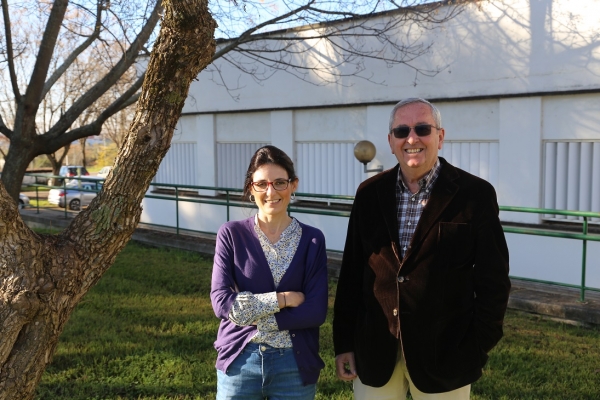Despite not being an essential element for plant growth, silicon increases plants’ tolerance of biotic stresses, such as pests and diseases; and abiotic ones, such as drought and salinity. The effects of this element, the second most abundant in the earth's crust, have not been widely studied, in general, and with regard to olive trees knowledge has been even scarcer.
Faced with this gap in the scientific literature, the Arboriculture group at the University of Cordoba has been a pioneer in verifying the results that the application of this element may have on olive trees, a crop characterized by its low accumulation of silicon.
The team formed by the researchers in the María de Maeztu Unit of Excellence (Department of Agronomy, University of Cordoba; DAUCO) Ricardo Fernández Escobar, María Benlloch and Kelly Nascimiento have published what will be the basis for impending works on olive grove fertilization with silicon, as they have defined the most effective dose, the method of application, and its consequences in terms of silicon absorption, accumulation and distribution in the plant organs of two varieties: Arbequina and Picual.
"We applied different doses and quantified how much enters the plant, the organs it accumulates in," explained researcher María Benlloch. The results show that silicon accumulation in olive trees increased, regardless of the variety, and that it was concentrated in greater proportion in the roots, followed by the leaves.
Although, to varying extents, all plants contain this element, it has been proven that applying an extra dose augments its beneficial effects. In this case, the ideal dose to obtain these benefits, and that is not harmful to the olive tree, is 20 mg per liter.
As for the method of application, the aptness of the two methods studied - the application of silicon to leaves, and supplying plants with via the soil, through irrigation water - were proven effective. "These results are very promising, because it can be applied to both rainfed and irrigated olive groves; most olive groves are rainfed, and it is very common to apply foliar treatments to them," emphasized Ricardo Fernández Escobar.
The use of this element in plant nutrition, as a strategy to help plants against pests, diseases and drought, is also beneficial from the point of view of sustainability, as it would make it possible to forgo other chemical synthesis products that are harmful to the environment.
Taking into account that silicon acts both by stimulating plants’ defenses internally, and by creating a physical layer on the leaf (when it reaches the leaf it forms a kind of gel), protecting it against agents such as fungi and insects, this study also proposes the use of foliar application, with several annual repetitions, to cover all new leaves.
"This study is a starting point paving the way for future research that will allow us to determine the exact benefits of silicon against different types of stress. Right now we are studying it against salinity, water stress and the olive fruit fly," says Fernández Escobar, who recalled that the efficacy of this element has already been demonstrated against Spilocaea oleaginea (olive leaf spot), one of the major aerial diseases affecting olive groves.
Therefore, this work represents a step forward on the road to sustainable nutrition in olive groves based on an element that, for now, growers do not usually include in their fertilization plans.
Nascimento-Silva, K., Benlloch-González, M., & Fernández-Escobar, R. (2022). Silicon Nutrition in Young Olive Plants: Effect of Dose, Application Method, and Cultivar, HortScience, 57(12), 1534-1539. Retrieved Jan 15, 2023, https://doi.org/10.21273/HORTSCI16750-22


